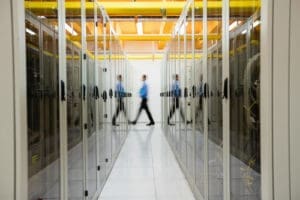 Managed service providers need a two-pronged approach to managing data centers that takes into account both the short-term needs of customers and the rapid rate at which advances in IT management are occuring.
Managed service providers need a two-pronged approach to managing data centers that takes into account both the short-term needs of customers and the rapid rate at which advances in IT management are occuring.
When it comes to providing managed services in the data center, a Voice of the Enterprise survey of more than 500 IT professionals published this week by 451 Research finds that 65 percent of organizations are finding it more difficult to recruit IT staff capable of managing either traditional servers or more modern forms of converged infrastructure. The key factors driving demand for additional staffing over the next 12 months are business growth (68 percent), followed by IT organization changes (42 percent).
Given the limited pool of IT talent available, an improving economic climate is good news for MSPs. IT organizations that can’t find enough talent to hire are more inclined to rely on external service providers. That’s assuming, of course, that MSPs can hire and retain the appropriate level of skilled talent required.
Automated data centers
But MSPs should also be paying careful attention to the rate at which converged infrastructure is being adopted inside the data center. Whether it comes in the form of some type of rack-based system or as a hyperconverged infrastructure (HCI) appliance, the level of automation baked into these systems is extensive. That increased level of automation is in turn driving many IT organizations to rethink how they are organized.
Instead of having server, storage, and networking specialists, a long-term shift is underway to rely on IT generalists capable of managing all those functions at a higher level of abstraction. In many cases, those capabilities will increase the confidence the internal IT organization has in their ability to manage IT at scale. At the same time, however, whenever there is a low-level issue with a physical server, storage array, or network switch, it’s unlikely an IT generalist will have the specialized knowledge to fix that problem. That creates an opportunity for MSPs to become the provider of tier two or three services that require more engineering expertise.
Increased competition
Of course, vendors make that level of IT expertise available themselves. But, most IT organizations don’t want to navigate support services themselves — especially when multiple vendors are involved. Distributors are also eager to provide the expertise needed to deliver higher margin IT services.
Naturally, providers of converged infrastructure are making a case for the benefits of having one throat to choke so to speak. But in practical terms, most IT environments are going to be made of heterogeneous systems and networks for years to come. Those data centers will be more defined by software that enables infrastructure to be treated like a piece of code. In fact, long-term it’s only a matter of time before a combination of machine and deep learning algorithms further automate the management of IT. But even then, an algorithm won’t be able to physically replace a critical component that has failed — at least not until those algorithms get embedded in a robot that can navigate its way around the data center on its own. But until such a day arrives, MSPs should start thinking through how they can add value at a time when every aspect of the data center is being transformed.
Photo: ESB Professional/Shutterstock
